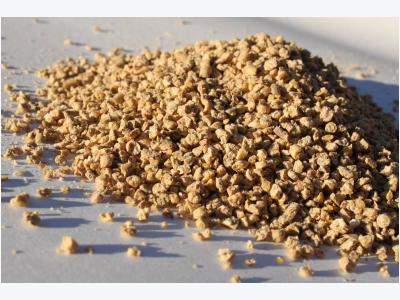World feed volume exceeds 1 billion metric tons

Alltech releases 2017 Global Feed Survey results
Global animal feed volume exceeded 1 billion metric tons of production in 2016, according to Alltech’s 2017 Global Feed Survey. The sixth edition of the animal nutrition and feed company’s annual survey gathers its data from international feed associations and more than 30,000 feed mills across 141 countries.
Most notably, this milestone was reached by fewer feed mills.
“2016 was a momentous year for the feed industry. For the first time, the amount of feed produced in the world exceeded 1 billion metric tons from fewer feed mills in previous years,” said Aidan Connolly, Alltech’s chief innovation officer. “The decline of the number of feed mills — down 7 percent — showed that their average production increased, as did feed efficiency.”
In contrast to the 2 percent growth rate in animal protein consumption, feed production only grew 1.6 percent per year.
“We’re getting more food out of farms, but we’re doing so with fewer requirements from feed and the feed efficiency is increasing as we move forward,” Connolly said.
In addition to livestock feed, Alltech’s volumes included 25.5 million metric tons (mmt) of pet food and equine volumes (7.8 mmt).
Regional output
The top 10 feed-producing countries accounted for two-thirds of world feed production (650 mmt).
Together, China and United States represent one-third of the world production, but the tonnage breakout by species varies based on regional preferences and sector maturity. For example, unsurprisingly, U.S. dairy feed production is seven times greater (23.3 mmt) than in China (3 mmt); while China’s aquafeed production (16 mmt) dwarfs U.S. aquafeed tonnage (1 mmt).
Based on its size, China also led in pig and layer feed production, 75.5 mmt and 29.4 mmt respectively.

The top 30 animal feed-producing countries of 2016 are also the largest consumers and exporters of meat and other animal protein products. | 2017 Alltech Global Feed Survey
In all, the Top 30 feed-producing countries accounted for 86 percent of animal feed tonnage.
“They’re all major consumers and exporters of animal protein — the feed tends to follow where animals are growing,” Connolly said.
Gains and losses
Asia, the world’s No. 1 feed-producing region, accounts for 37 percent of total feed production, followed by Europe, 25 percent, and North America, less than 20 percent, Connolly said.
Additional regional highlights:
- Asian production has grown by 5 percent, with China as the largest market
- Africa is the fastest growing by 13 percent to 40 mmt, with Nigeria the leader
- Spain leads Europe as its largest feed-producing country, up 8 percent to 32 mmt
- Mexican volumes grew by 20 percent of total Latin American feed tonnage (157.5 mmt)
- Vietnam ranks as the fastest-growing Asian feed producer, hitting 18.7 mmt — marking 21 percent growth over 2015 volumes. This push was driven primarily by increased pig and broiler feed production.
Jackie Roembke is editor of Feed Management and Feed International.
Related news
 What will Trump mean for food policy and the Farm Bill?
What will Trump mean for food policy and the Farm Bill? In a look forward at what farm and food policy will look like under the Trump administration. to discuss issues like trade and the Farm Bill that affect
 Broiler, pig production costs in Brazil rose in 2016
Broiler, pig production costs in Brazil rose in 2016 December 2016 saw the trend of declining feed prices for Brazil’s poultry and pig producers continue, but overall average costs remained well above the start of
 5 traits global consumers want to know about food
5 traits global consumers want to know about food Trends that originated in Europe and the US are going global, and food producers should take notice or risk being left behind.